
© Stephanie Berger. (Click image for larger version)
Christine Jones, Steven Hoggett and David Byrne
SOCIAL! the social distance dance club
★★★✰✰
New York, Park Avenue Armory, Social Distance Hall
15 April 2021
www.armoryonpark.org
Mark Morris Dance Group dancers
Works & Process Pop Up Performances: Words
★★★★★
New York, Guggenheim Museum
16 April 2021
markmorrisdancegroup.org
www.guggenheim.org
Signs of Life
The New York performing arts world is trying desperately to get back on its feet after more than a year of closures and inactivity. All the traditional places where music and drama and dance usually happen are still shuttered, and will be, likely until the fall.
But this spring, finally, a few organizations in New York with access to large spaces – and some small spaces – are doing what they can to bring live performance, that essential part of life in New York, back to the city. There is dancing and music-making happening beneath the towering dome of the Guggenheim Museum, courtesy of Works & Process. New York Theatre Ballet is holding a festival of new works for reduced numbers of dancers and audience-members at its studio in the East Village. Lincoln Center has announced that it will present a variety of outdoor performances in the summer as part of its “Restart Stages” initiative, which also involves turning its main plaza into a futuristic-looking green landscape, complete with soy-based artificial grass. Hooray?
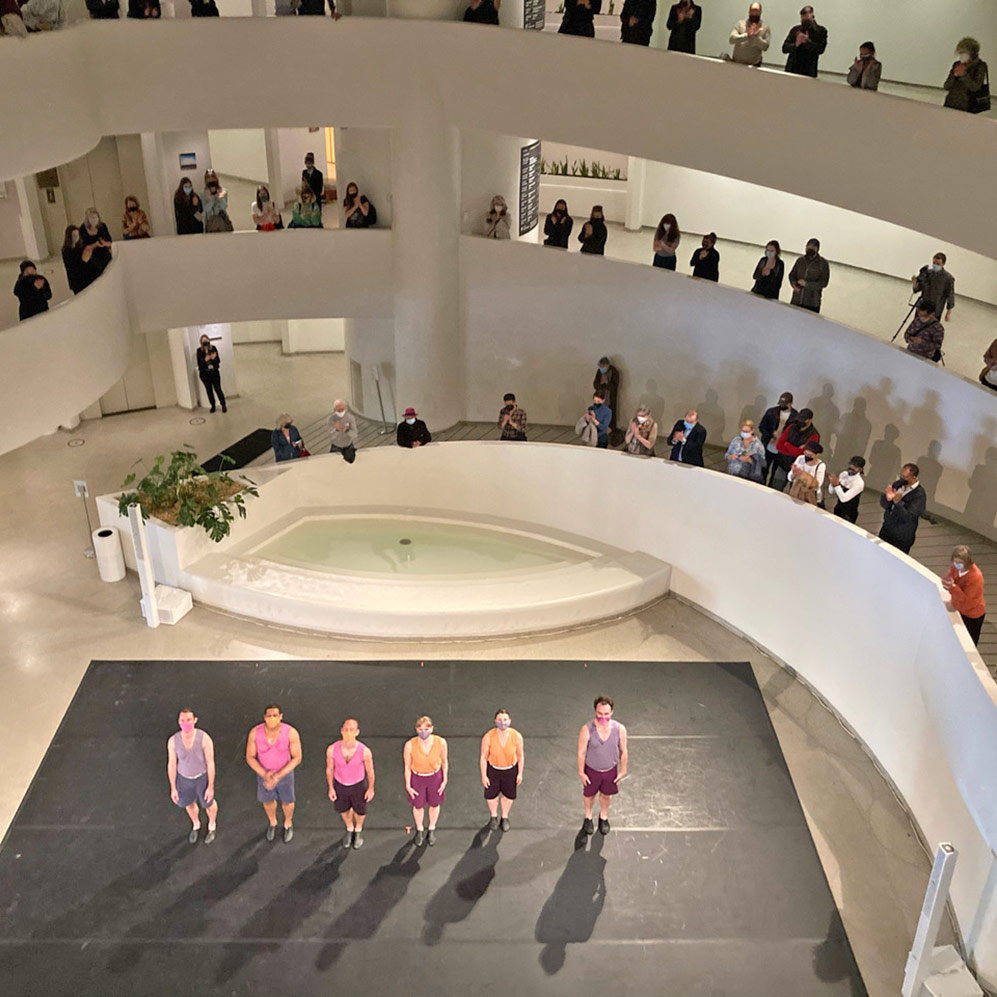
© Marina Harss. (Click image for larger version)
Meanwhile, the Park Avenue Armory, which contains a 55,000-square-foot “Drill Hall” – a cavernous space in which the Seventh Regiment of the National Guard once executed military exercises – is trying out some novel ideas. The hall, renamed the “Social Distance Hall,” is large enough for audiences to be kept safely spaced out, while watching, or taking part in, performances. Their first outing is SOCIAL! the social distance dance club, a highly regulated dance party that takes place every evening through April 22.
On Thursday night, I attended SOCIAL!, and on Friday afternoon I showed up with a timed ticket to the Guggenheim to watch a “Pop Up Performance” by six dancers from the Mark Morris Dance Group, doing a reduced version of Morris’s Words.
I had strongly contrasting reactions. Where SOCIAL!, despite its best intentions, left me cold, the simple act of watching six dancers moving to Mendelssohn in a beautiful space shared with other people filled me with a powerful combination of nostalgia and hope. This is the thing many of us miss: being in the presence of great art, made right here, performed by humans who have devoted their lives to creating something meaningful and beautiful that takes us out of ourselves. I felt closer to the (masked) dancers of the Mark Morris Dance Group, and to the essential core of humanity in all of us, while watching them from a distance than I did to my fellow (masked) dancers at the Armory, among whom I moved my hips and feet for the better part of an hour.
SOCIAL is a nice idea, at least on paper, conceived by a trio of artists: the director and set designer Christine Jones, the British Choreographer Steven Hoggett, and the alternative rock icon David Byrne, co-founder of the eighties band the Talking Heads, beloved of brainy teenagers. Who wouldn’t want to dance together after a year of being apart, while enjoying music selected by David Byrne and moving around in a majestic space?
The experience comes, of course, with strings attached: Each night, several hundred masked attendees line up outside of the Armory, enter one by one, get tested for COVID, wait for the results, and then are led along minutely-choreographed pathways into the Drill Hall, where they are given a specific spot that will be theirs for the duration of the show. All of this works with almost military precision, thanks to an army of well-rehearsed helpers: nurses to administer tests, ushers, hosts to explain the rules. (What it must cost!) The audience stands in a multi-colored grid, well separated, illuminated by gorgeous spotlights. In the center, the sylph-like and enthusiastic DJ Natasha Diggs reigns on her computer-laden platform, riling up the participants with nimble moves, spectacularly undulating braids, and swaying mermaid skirt. She is an electro-pop goddess, an avatar, the spirit of the party personified.
For an hour, led by the supportive voice of David Byrne, and more insistently by the rhythmic pulse of Diggs’ playlist, the participants – young and old, mostly white – groove, each in his or own pool of light. Byrne’s words are full of encouragement: “There’s no right way or wrong way.” “Isn’t it great to be together like this, after being apart for so long?” “Maybe the person for you is in this room right now!” “You’re all VIP’s in the social distance dance club!” (These are paraphrases.) The music flows from James Brown, to Byrne, to Daft Punk, to some soulful Joni Mitchell.
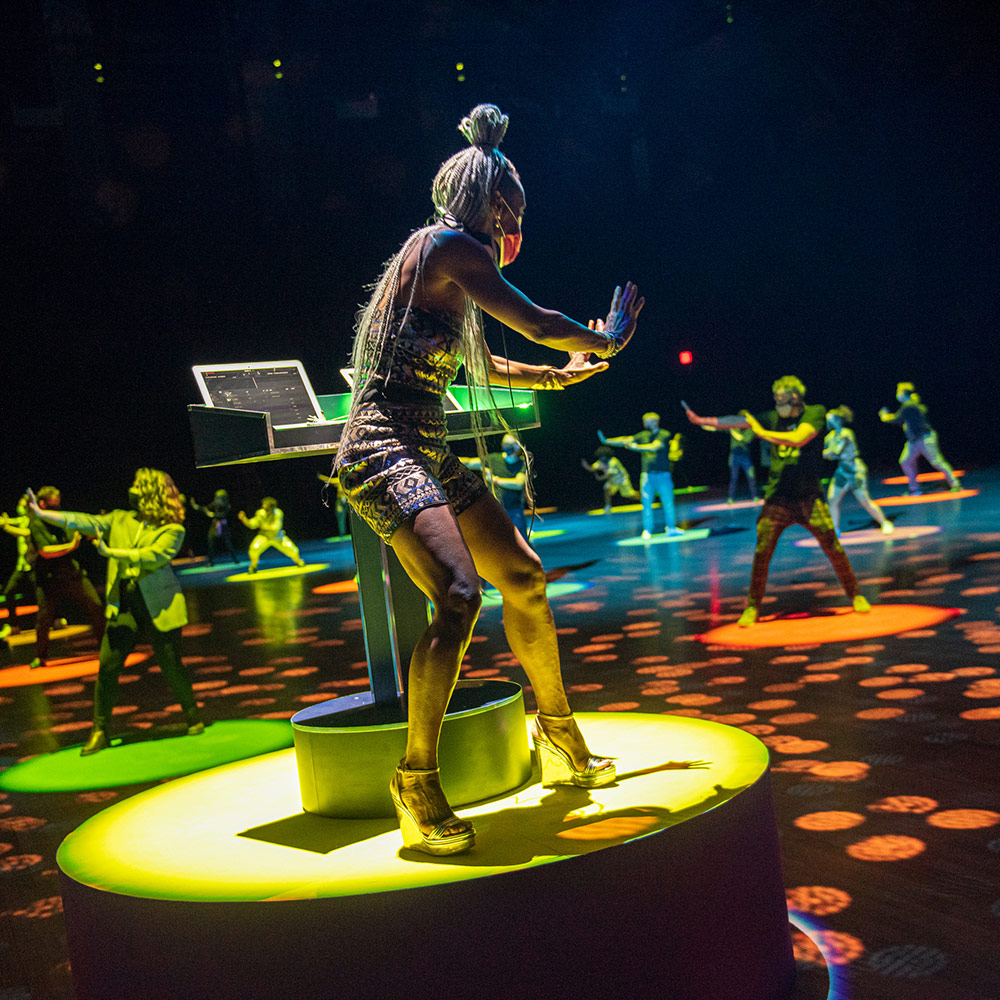
© Stephanie Berger. (Click image for larger version)
Byrne makes suggestions – dance like a Zombie! Dance like you’re on the bus! – but for the most part, people do their own thing. One man near me began a slow-motion back-stroke at the start of the hour, and kept it going for the remaining 59 minutes. A young woman with beautiful blond hair, and dance training, took off her shoes and did some nifty pirouettes and high kicks. A guy across the hall showed off endlessly cool moves. The woman in front of me seemed happy to just bop along. New Yorkers are very game.
And yet, there was little sense of fun – or rather, it started to feel like the performance of fun. There was no eye contact, no playful interaction, no real freedom. The other people in the room began to take on the qualities of digital avatars, as weightless as Byrne’s piped-in voice. And, at least for me, the accumulation of positive messages began to have the opposite of its intended effect. There is something dystopian about the idea of dancing in place, in a strict grid formation, because you have to. Is this what the future will look like, I began asking myself as I shuffled my feet to the beat with as much enthusiasm as I could muster?
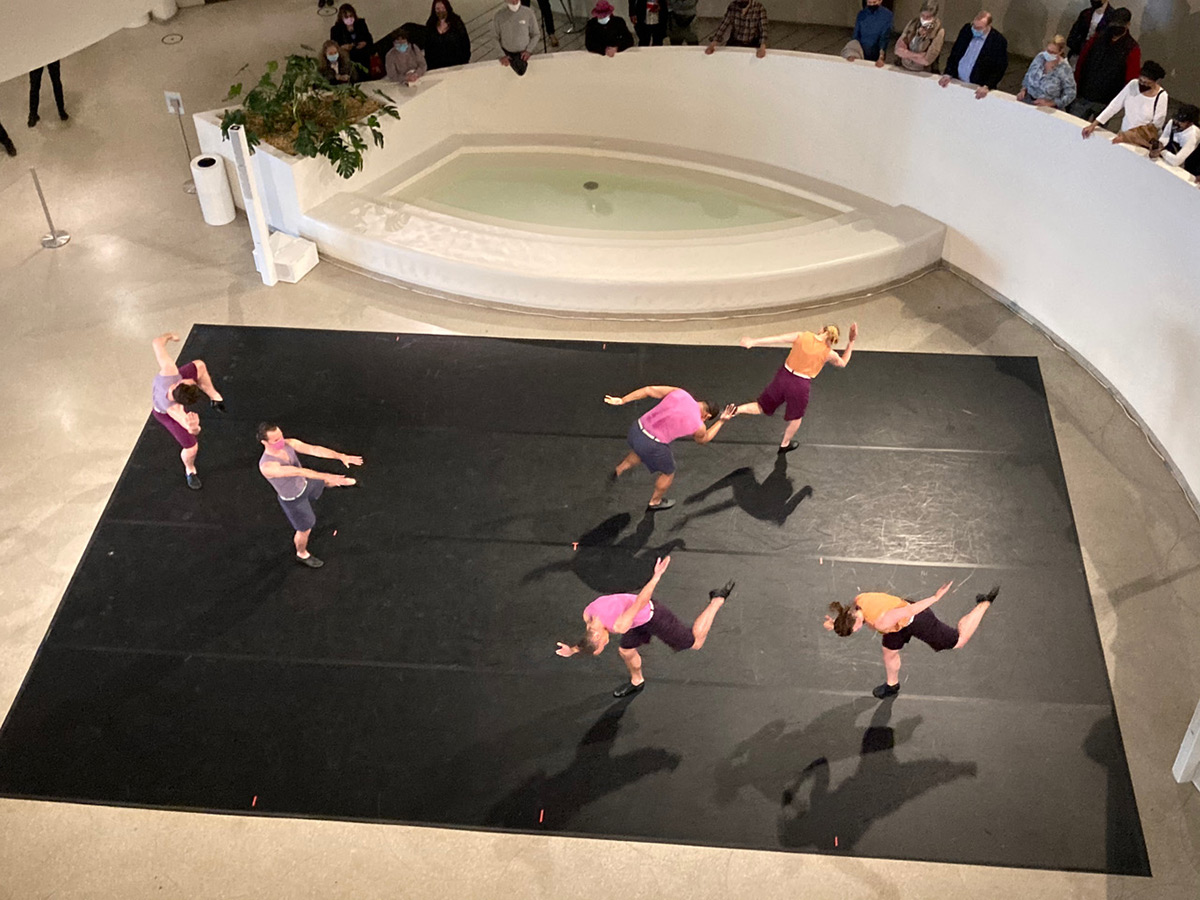
© Marina Harss. (Click image for larger version)
Several hours later, I found myself standing at one of the balustrades that line the curling promenade of the Guggenheim Museum. Below me, I could see the grand piano, played by Colin Fowler, Mark Morris’s music director, and a rectangle of dance floor. Mark Morris sat to one side, watching his dancers.
In shorts and simple tops, they danced in that plainspoken way that typifies the Morris company. Two women seemed to pluck notes out of the air. Then a man entered, and there was some partnering. The man and woman were perfectly equal. He leaned on her back, and she supported his weight as he did an attitude with a twisted torso. Later all six dancers spun together, like dervishes, to a trill on the piano. One entire section of the dance was built out of variations on an action that looked like a person swinging a baseball bat. There was a funeral march, and a game of tag.

© Quinn Wharton. (Click image for larger version)
People watched, rapt, from the sides. That special quiet that takes hold when people are really enjoying something filled the space. I found my eyes welling with tears. Some things really are very simple. On this day, all that was required was a space, music, human beings, and a brilliant mind animating it all. It’s the simplest thing, and the most precious.













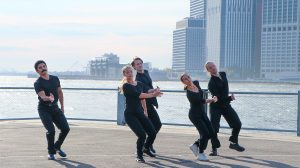

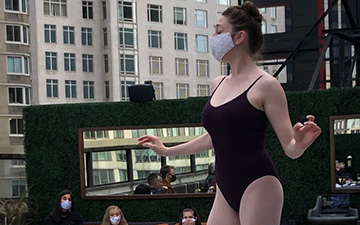
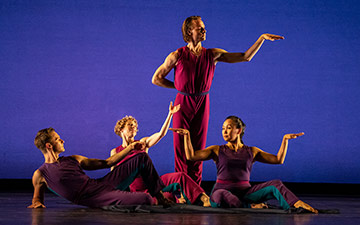
You must be logged in to post a comment.